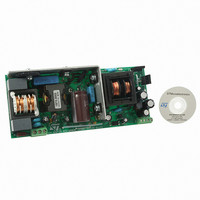EVL90WADP-LLCSR STMicroelectronics, EVL90WADP-LLCSR Datasheet - Page 23

EVL90WADP-LLCSR
Manufacturer Part Number
EVL90WADP-LLCSR
Description
EVAL BOARD PORTABLE PWR SUPPLY
Manufacturer
STMicroelectronics
Type
Power Factor Correctionr
Datasheets
1.L6563HTR.pdf
(49 pages)
2.L6599ADTR.pdf
(36 pages)
3.EVL90WADP-LLCSR.pdf
(29 pages)
4.EVL90WADP-LLCSR.pdf
(28 pages)
Specifications of EVL90WADP-LLCSR
Main Purpose
AC/DC, Primary and Secondary Side with PFC
Outputs And Type
1, Isolated
Power - Output
90W
Voltage - Output
19V
Current - Output
4.75A
Voltage - Input
90 ~ 264VAC
Regulator Topology
Boost
Frequency - Switching
130kHz
Board Type
Fully Populated
Utilized Ic / Part
L6563H, L6599A, SRK2000
Input Voltage
90 V to 264 V
Output Voltage
19 V
Dimensions
65 mm x 155 mm
Product
Power Management Modules
Supply Current
4.75 A
Lead Free Status / RoHS Status
Lead free / RoHS Compliant
For Use With/related Products
L6563H, L6599A, SRK2000
Other names
497-10377
L6599A
7.3
Soft-start
Generally speaking, purpose of soft-start is to progressively increase converter's power
capability when it is started up, so as to avoid excessive inrush current. In resonant
converters the deliverable power depends inversely on frequency, then soft- start is done by
sweeping the operating frequency from an initial high value until the control loop takes over.
With the L6599A converter's soft start-up is simply realized with the addition of an R-C
series circuit from pin 4 (RFmin) to ground (see
Initially, the capacitor CSS is totally discharged, so that the series resistor RSS is effectively
in parallel to RFmin and the resulting initial frequency is determined by RSS and RFmin
only, since the optocoupler's phototransistor is cut off (as long as the output voltage is not
too far away from the regulated value):
Equation 4
The C
(2 V) and, consequently, the current through R
times constants R
regulated value and the feedback loop taken over, so that it will be the optocoupler's
phototransistor to determine the operating frequency from that moment onwards.
During this frequency sweep phase the operating frequency will decay following the
exponential charge of C
change will get slower and slower. This counteract the non-linear frequency dependence of
the tank circuit that makes converter's power capability change little as frequency is away
from resonance and change very quickly as frequency approaches resonance frequency
(see
Figure 27. Soft-start circuit (left) and power vs. frequency curve in an resonant
As a result, the average input current will smoothly increase, without the peaking that occurs
with linear frequency sweep, and the output voltage will reach the regulated value with
almost no overshoot.
Typically, R
Figure 27
SS
capacitor is progressively charged until its voltage reaches the reference voltage
SS
half-bridge (right)
and C
, right).
SS
SS
·C
SS
will be selected based on the following relationships:
SS
but, before that time, the output voltage will have got close to the
, that is, initially it will change relatively quickly but the rate of
Doc ID 15308 Rev 5
f
start
=
3
⋅
CF
⋅
(
SS
RF
Figure 27
1
goes to zero. This conventionally takes 5
min
//
R
SS
, left).
)
Application information
23/36












